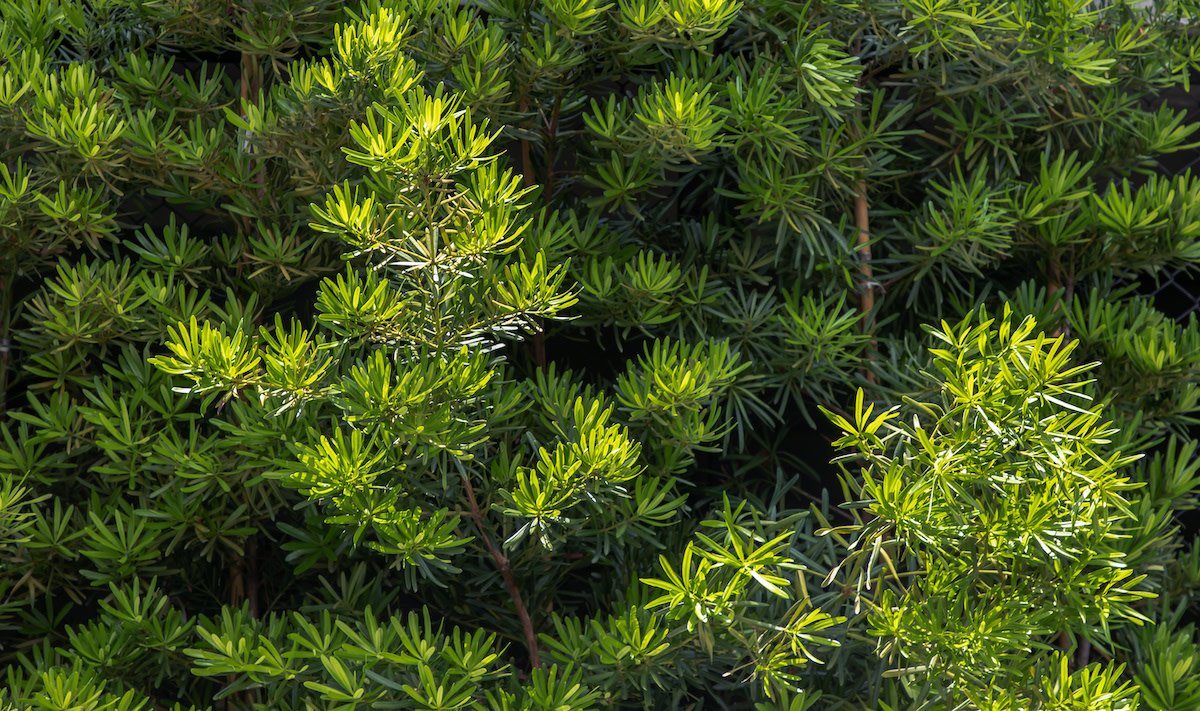Fern Pine Care Tips: How to Grow Fern Pine Trees
Written by MasterClass
Last updated: Oct 7, 2021 • 2 min read
Fern pine trees are native to East Africa, but they can also thrive in North America when planted in USDA hardiness zones nine through eleven.
Learn From the Best
What Is a Fern Pine?
The African fern pine (Afrocarpus gracilior or Podocarpus gracilior) is a drought-tolerant evergreen tree that can grow upwards of sixty feet tall and provide ample shade to a landscape. The tree is native to eastern Africa, but with proper care, it will thrive in USDA hardiness zones nine through eleven.
African fern pines stand out for their long, soft green leaves, which distinguish them from the native pine trees of North America. Their flower color is yellow. The African fern pine resembles the yew pine (Podocarpus macrophyllus), which typically grows in colder climates. Another close relative is the Afrocarpus falcatus, which is better known by the common names weeping yew or common yellowwood. All belong to the plant family Podocarpaceae.
How to Grow a Fern Pine
The fern pine can be a hardy and low-maintenance shade tree or street tree when grown under proper conditions.
- 1. Hardiness: The African fern pine should be planted in USDA zones nine through eleven. While the trees are hardy, it’s best to avoid planting them in regions that receive a significant amount of frost.
- 2. Soil: Members of the Podocarpaceae family do best in neutral soil, but they can also do well with a soil pH that’s mildly acidic. The trees do well in both loamy and sandy soils.
- 3. Sunlight: African fern pines do best in full sun exposure, but they can also thrive in partial shade. Heavily pruned fern pines can even work as houseplants, provided they are kept near a sunny window.
- 4. Water needs: Young fern pines need heavy watering once per week. By their third year of life, they only need regular water every other week. Mature trees can withstand long droughts, but they do best when they receive water one or more times per month.
- 5. Pruning: The African fern pine responds well to pruning. Prune these trees in late winter or early spring to prompt new growth at the start of the growing season. If you wish, you can heavily prune these trees to shape them like a topiary.
How to Care for a Fern Pine
Once established, fern pines need little maintenance. They are conifers that do not shed their foliage. They can be mildly susceptible to sooty mold, scale, or aphids, but such issues will not seriously harm a mature fern pine tree. The species is deer-resistant as well.
Plant care for the African fern pine consists of watering (more for trees planted in full sun, less for part shade), annual pruning (which can speed up the growth rate), and fertilizing at the start of the spring growing season. You can also add a layer of mulch on the ground surrounding these plants to help the soil retain moisture. That said, avoid letting mulch press up against the base of the tree as this can cause mildew and decay.
Toxicity and Safety Tips for Fern Pines
Neither humans nor pets should eat any part of the African fern pine. They are fine to handle, but all the parts of the plant (bark, wood, foliage, seeds) contain substances toxic to mammals and should not be ingested.
Learn More
Grow your own garden with Ron Finley, the self-described "Gangster Gardener." Get the MasterClass Annual Membership and learn how to cultivate fresh herbs and vegetables, keep your house plants alive, and use compost to make your community—and the world—a better place.
